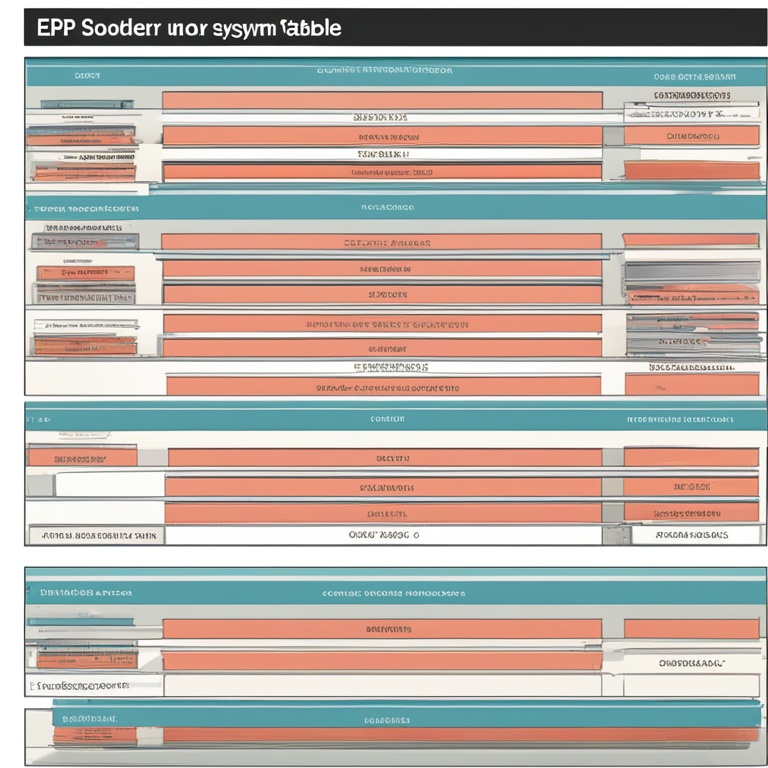

In today's global business environment, cross - border operations are becoming increasingly common. For businesses involved in cross - border activities, an efficient Enterprise Resource Planning (ERP) system is crucial. However, with a plethora of cross - border ERP systems available in the market, choosing the right one can be a daunting task. This blog post aims to present a comprehensive selection table for cross - border ERP systems, along with their pricing, to help businesses make an informed decision.
1. Understanding the Importance of Cross - border ERP Systems
Cross - border ERP systems play a vital role in integrating various business processes across different countries and regions. They enable seamless management of operations such as supply chain, inventory, finance, and customer relationship management on a global scale. For example, a multinational company that manufactures products in one country and sells them in multiple countries needs an ERP system to track inventory levels across different warehouses, manage currency conversions for financial transactions, and ensure compliance with local tax and regulatory requirements in each market.
Without a proper cross - border ERP system, businesses may face challenges such as inefficiencies in supply chain management, increased costs due to manual handling of multiple currencies and tax regulations, and difficulties in maintaining consistent customer service across different regions. An effective ERP system can streamline these processes, reduce costs, and enhance overall business competitiveness.
2. Key Features to Consider in Cross - border ERP Systems
Multi - currency Support: One of the most critical features for cross - border ERP systems is multi - currency support. The system should be able to handle different currencies accurately, including currency conversions, exchange rate management, and reporting in multiple currencies. This is essential for businesses dealing with international sales, purchases, and financial transactions. For instance, a company that exports products to various countries needs to be able to invoice customers in their local currencies and accurately record the revenue in its home currency.
Tax and Regulatory Compliance: Different countries have different tax laws and regulatory requirements. A good cross - border ERP system should be able to adapt to these variations. It should be able to calculate taxes accurately, such as value - added tax (VAT), customs duties, and corporate income tax, based on the specific regulations of each country. Additionally, it should help businesses comply with other regulatory requirements, such as data privacy laws and trade regulations.
Supply Chain Management: Effective supply chain management is crucial for cross - border operations. The ERP system should provide features for managing inventory across multiple locations, tracking shipments, and coordinating with suppliers and logistics partners. It should also be able to optimize the supply chain by forecasting demand, reducing lead times, and minimizing inventory costs. For example, an ERP system can use real - time data to predict when a particular product will run out of stock in a foreign warehouse and initiate a timely replenishment order.
Language Support: In a cross - border business environment, language can be a barrier. An ERP system that offers multi - language support can facilitate communication and user adoption across different regions. It should be able to display interfaces, reports, and documentation in various languages, making it easier for employees in different countries to use the system effectively.
3. Selection Table for Cross - border ERP Systems
The following table compares some popular cross - border ERP systems based on the key features mentioned above, along with their approximate pricing:
| ERP System | Multi - currency Support | Tax and Regulatory Compliance | Supply Chain Management | Language Support | Pricing (Monthly Subscription) |
|---|---|---|---|---|---|
| System A | Advanced, with real - time exchange rate updates | Covers major international tax regulations | Comprehensive, with inventory optimization features | Supports 10+ languages | $500 - $1000 (depending on user count) |
| System B | Good, allows custom currency conversions | Updates regularly for tax law changes | Strong in shipment tracking and supplier management | Supports 5 languages | $300 - $800 (based on module selection) |
| System C | Basic multi - currency functionality | Limited to certain regions for tax compliance | Simple inventory management capabilities | Only in English and Spanish | $200 - $600 (depending on company size) |
4. System A - A Closer Look
System A stands out with its advanced multi - currency support. The real - time exchange rate updates ensure that financial transactions are accurately recorded in the correct currency values. This is especially beneficial for businesses with high - volume international transactions. In terms of tax and regulatory compliance, it has a wide coverage of major international tax regulations, which reduces the risk of non - compliance and potential penalties.
Its supply chain management features are comprehensive. The inventory optimization tools can help businesses reduce inventory holding costs while ensuring product availability across different locations. The multi - language support for over 10 languages also makes it a suitable choice for multinational companies with a diverse workforce. However, the pricing, which ranges from $500 to $1000 per month depending on the user count, may be a bit higher compared to some other systems. But considering the advanced features it offers, it can be a valuable investment for businesses that require a high - level of functionality.
5. System B - Advantages and Disadvantages
System B offers good multi - currency capabilities with the option for custom currency conversions. This can be useful for businesses with unique currency requirements. It also updates regularly for tax law changes, which helps in maintaining compliance. In supply chain management, its strength lies in shipment tracking and supplier management, enabling businesses to have better control over their logistics operations.
On the downside, it only supports 5 languages, which may limit its usability in some multilingual environments. The pricing, which varies based on module selection within the range of $300 - $800 per month, can be a bit complex to understand. However, for businesses that do not require extensive language support and are more focused on specific supply chain and currency management features, System B can be a cost - effective option.
6. System C - Is it Right for You?
System C has basic multi - currency functionality and limited tax compliance capabilities, mainly restricted to certain regions. Its inventory management is relatively simple, and it only supports two languages. While it has a lower price range of $200 - $600 per month depending on company size, it may not be sufficient for businesses with complex cross - border operations.
However, for small - scale businesses that are just starting their cross - border activities and have relatively straightforward requirements in terms of currency, tax, and supply chain management, System C can be a viable option. It can serve as an entry - level solution that can be upgraded as the business grows and its requirements become more complex.
7. Making the Final Decision
When choosing a cross - border ERP system, businesses should first assess their specific needs. Consider factors such as the volume of international transactions, the number of countries in which the business operates, the complexity of supply chain operations, and the importance of language support. For example, if a business has a large number of employees in different countries and deals with a high volume of international sales, a system like System A with its comprehensive features may be the best choice, despite the higher cost.
On the other hand, if cost is a major concern and the business has relatively simple cross - border operations, a more budget - friendly option like System C may be sufficient in the short - term. It is also important to consider the long - term scalability of the ERP system. As the business grows, the system should be able to handle increased data volumes, more users, and additional functionality requirements.
In addition, businesses should look for ERP providers that offer good customer support. Since cross - border ERP systems can be complex, having reliable technical support to resolve any issues quickly is essential. Some providers may also offer training and implementation services, which can help businesses get up and running with the new system smoothly.
In conclusion, choosing the right cross - border ERP system is a critical decision for businesses engaged in international operations. By carefully considering the key features, comparing different systems using the selection table, and assessing their own specific needs and budget, businesses can select an ERP system that will enhance their cross - border operations, improve efficiency, and drive growth.